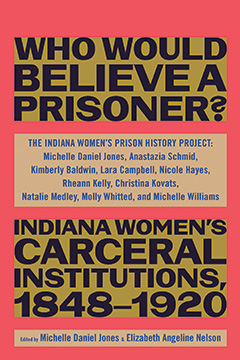The mainstream narrative of the founding of the Indiana Reformatory Institution for Women and Girls is that two women, Quaker reformers in 1873, started this prison with the hope of rescuing incarcerated women from abuses inside the prison that held men and women. How does your research complicate that narrative?
Nelson: I think what really began to expand and deepen the scope of the research was finding evidence of violence, sexual violence, medical experimentation, you name it, within the prison’s first decade. There were also similar patterns of violence and economic exploitation in other, private facilities that researchers traced.
I think among the researchers there was an alertness for and also a suspicion of the prison’s glowing reports about itself. The researchers were not necessarily looking for dirt, but were highly suspicious. I think this speaks to some of the most important levels of critique that the book presents, which is that the violence at the very heart of the system of incarceration, and of women’s incarceration, all goes right back to the very beginning. It also shows that we need to be suspicious of the stories that these institutions tell about themselves.
Jones: I absolutely agree with that. I think that is because we had a particular experience of incarceration ourselves where we saw things happen that were covered up, and things that happened to us as individuals. We set ourselves up to believe these women, because we were these women. Then from there we began to ask questions. A historian who has not been impacted by incarceration probably would have taken the archive at face value and not asked the type of questions that we did.
It took me a while to come up with the phrase of “privileging our experience of incarceration as a lens to understand the archive.” I remember Anastazia Schmid, who’s written a great deal for this book, was one of the most outspoken people with that point. I paid attention to Anastazia’s thinking, like, “I know what’s happening,” “I can critique this,” “I can ask questions of this because I had similar experiences myself in the county jail.”
Was there anything you discovered in this research journey that surprised you?
Jones: When the reformatory actually opens there were no people incarcerated for sex offenses. So we asked, “Well, where are they?” We looked through archives for the county jail. They were not in the county jail. So we thought, “Well, if they are not in the county jail, they are not in the first prison, they are not in the home for friendless women, then where are they?”
